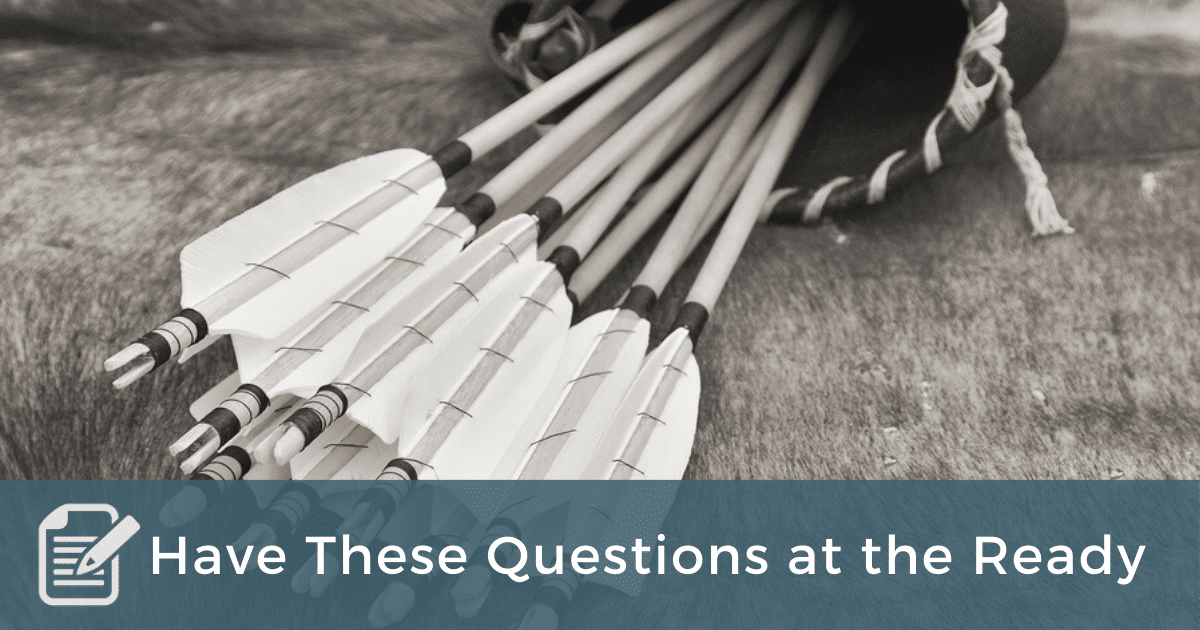
In my ebook The Language of Coaching, I compare learning to coach with learning a new language. It’s not that we learn new vocabulary, syntax, grammar and alphabet, but we do learn a new way to speak the language we already know.
For new coaches, one of the most challenging aspects of learning this new language is asking questions at key moments in the coaching conversation. Why? Because most conversations are not all that intentional and they just kind of unfold naturally while coaching conversations follow a model or typical agenda. Instead of relying on the client to help steer the conversation it’s up to the coach to help the conversation follow the proper process. A big help in doing this is to have some go-to ways of asking questions at key moments in the conversation. Here are some examples.
Starting the conversation. Most coaching conversations start by talking about the weather or connecting in some other way. But at some point early on the coach needs to bring the conversation to focus. Here are some sample questions for transition from connecting over small talk to focusing on the client’s agenda:
• What would you like to talk about today?
• What’s our focus?
• What’s on our agenda?
• What do you have for us to work on today?
Exploring the issue. Once a client shares his or her topic, it’s time to explore the issue. As the coach, you shouldn’t assume you know what’s really going on, nor should you assume the client really knows. This is a time to explore the issue and create new awareness for the client. Here are some questions that can serve this purpose:
• What’s most important for you about this topic?
• Where do you want to be on this in one year? (Or one month, or ten years, etc. depending on the nature of the issue.)
• What are seven questions you’re asking yourself about this issue?
• What would forward movement look like?
• What do we need to do in this conversation?
Exploring the options. Only after a topic is explored can you move to looking at options. Otherwise, you’ll unpack a lot of options without really knowing what the options need to address. Also, you don’t want to jump onto the first idea that’s generated. Once you have the conversation properly focused, you can explore options using questions such as these:
• What are the characteristics (or criteria) for a great solution?
• What’s the worst thing you could do?
• What are three different ways to handle this?
• If you had a million dollars to spend on a solution what would you do? What if you only had two cents?
Designing Actions. A rookie mistake for coaches is to confuse identifying an action with designing it. The difference is important. “Talking to my boss” is an identified action. But the design of that action will include lots of elements that make it more likely the client will take the action and make success more likely. Designing questions sound like these:
• How will you know you’ve completed the action?
• What would success/failure look like?
• What’s your timeline? First step?
• What obstacles could slow you down, distract you, or cause you to stumble?
• What resources do you need?
• What prep do you need?
• What will help ensure you follow through on this?
Ending the conversation. As the conversation concludes, some coaches find it awkward to “land the plane.” They sometimes ask broad, open-ended questions (e.g., “What else would you like to focus on?”) even though the conversation is practically over. The end of the conversation needs to signal strongly that things are winding down while also serving as genuine questions that can provoke helpful discovery. Here are some examples:
• Okay, so bottom line, what is your very first step?
• Take the last minute to share your biggest takeaway from our conversation today.
• What’s one thing that would make this great plan just a bit better?
• How’s it going to feel taking the first step?
Anytime I share sample questions I feel it necessary to remind the reader that sample questions are meant to stir your own coaching creativity. You don’t need to parrot these questions, but it does help for you to have a handful of go-to questions that sound like you, fit your clientele, and help the conversation proceed through these pivotal passages.
Another reminder: most of the great coaching questions come in response to what the client just said. The sample questions in this blog post are for those occasions when you, the coach, are helping guide the conversation to the next appropriate stage. These should make up only a small portion of the conversation (less than 20% of what you’re saying as the coach). But if you’re new to coaching, these kinds of questions will help you keep the conversation from just wandering in circles and provide a bit more process and structure the conversation.


